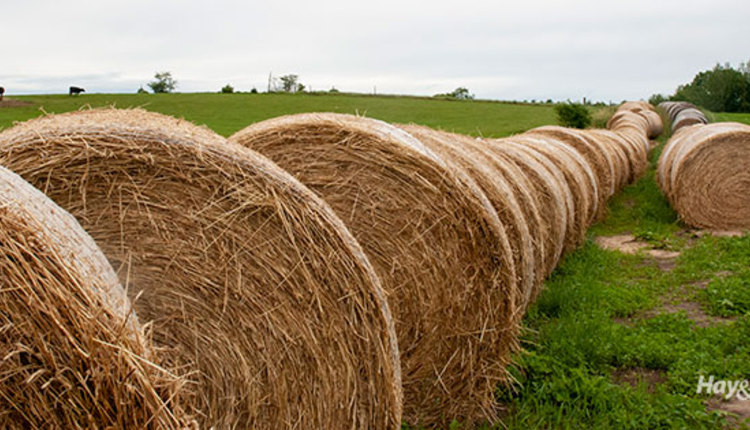A world of hay lovers and haters |
| By Mike Rankin, Managing Editor |
|
|
 One of the recurring themes we continue to hear these days is in regard to the high level of division and partisanship that currently exists throughout society. As such, the vast amount of land in between an issue is often uninhabited desert. Compromise has become a dirty word. This kind of right or wrong thinking isn’t limited to politics. We also find it in business, sports, and, of course, agriculture. One forage issue that I’ve followed closely during the past several years centers on the act of making hay on a grazing livestock operation. One of the rally cries heard over and over again is to extend the grazing season as long as possible to eliminate or drastically reduce the need to feed hay. The next step in the process is to sell that expensive hay equipment. Hay is evil; grazing is good (or at least cheaper, which makes it better). I attend a lot of forage conferences, and it’s become a rare occurrence to even hear a presentation on haymaking outside of the arid West. I hear a lot of presentations and see a plethora of budgets on why a person shouldn’t make hay, with little mention of compromise. Haymakers have become hesitant to show up at some forage meetings for fear of being flogged. So, should we burn our round balers in an act of practical defiance? I don’t think so, or at least not without some thought. First, let’s understand that extending the grazing season makes all of the economic sense in the world. As such, less hay will need to be fed and, in the Deep South, maybe no hay will need to be fed. Absolutely use every strategy available to begin grazing earlier in the spring and keep grazing for as long as there’s forage available. Annuals and stockpiling can make long grazing seasons a reality. Even with this reality comes an even bigger one — most grazing operations are still going to need hay for winter feeding and as a risk management tool to help preserve and mitigate short forage situations due to drought. SOMEBODY is going to have to make hay. The pertinent question here is how is that going to be best accomplished. I rarely hear this topic addressed at forage conferences. Machine ownership The first question that needs to be asked is if there is a need for hay equipment ownership. For larger operations, there probably is because they can take advantage of economies of scale. In Northern states, where the winter hay-feeding season is long even with extended grazing seasons, hay equipment ownership may also make good sense because the hay volume need is greater. Equipment ownership can come in several flavors. Where the situation exists, joint ownership of equipment with a trusted neighbor or family member is an excellent way to halve your ownership costs while still maintaining control of the haymaking enterprise. Often, labor is shared as well. Finally, there are some of you out there who are good mechanics and are able to keep old equipment running efficiently at a minimal cost. Machine ownership might make more sense for these types of individuals compared to a person who feels they need new paint every three years to bale 100 acres annually. Other options Hay machine ownership is not the only alternative. If the land ownership situation is such that you have dedicated hayfields or extra acreage during the spring flush of growth that needs baled, hiring a reliable custom haymaker makes a lot of sense. Many times, this is the most cost-effective way to meet hay inventory needs. Of course, the critical word here is “reliable,” meaning that the hay gets made when it needs to get made and not three weeks late. A final option is simply to purchase all of your hay. Again, you need to find a reputable supplier who can meet your quantity and quality hay inventory needs year after year, even when supplies are short and expensive. This may certainly be the best option if your hay-feeding season is relatively short. Haymakers are your friends Haymaking may be a necessary evil, but haymakers are not villains. Hay keeps livestock alive and performing in times when pastures can’t do the same. The best approach to meet hay needs is going to vary with the situation. Watching expenses is always a good idea, and there’s no doubt that some livestock producers could do a much better job of reducing their hay needs or haymaking costs. Just keeping bales high and dry during storage to reduce waste will help accomplish the latter. That said, hay is going to be needed on most U.S. grazing operations, and there should be more attention paid to making and storing that hay efficiently rather than offering a blanket recommendation to torch the hay baler. |
